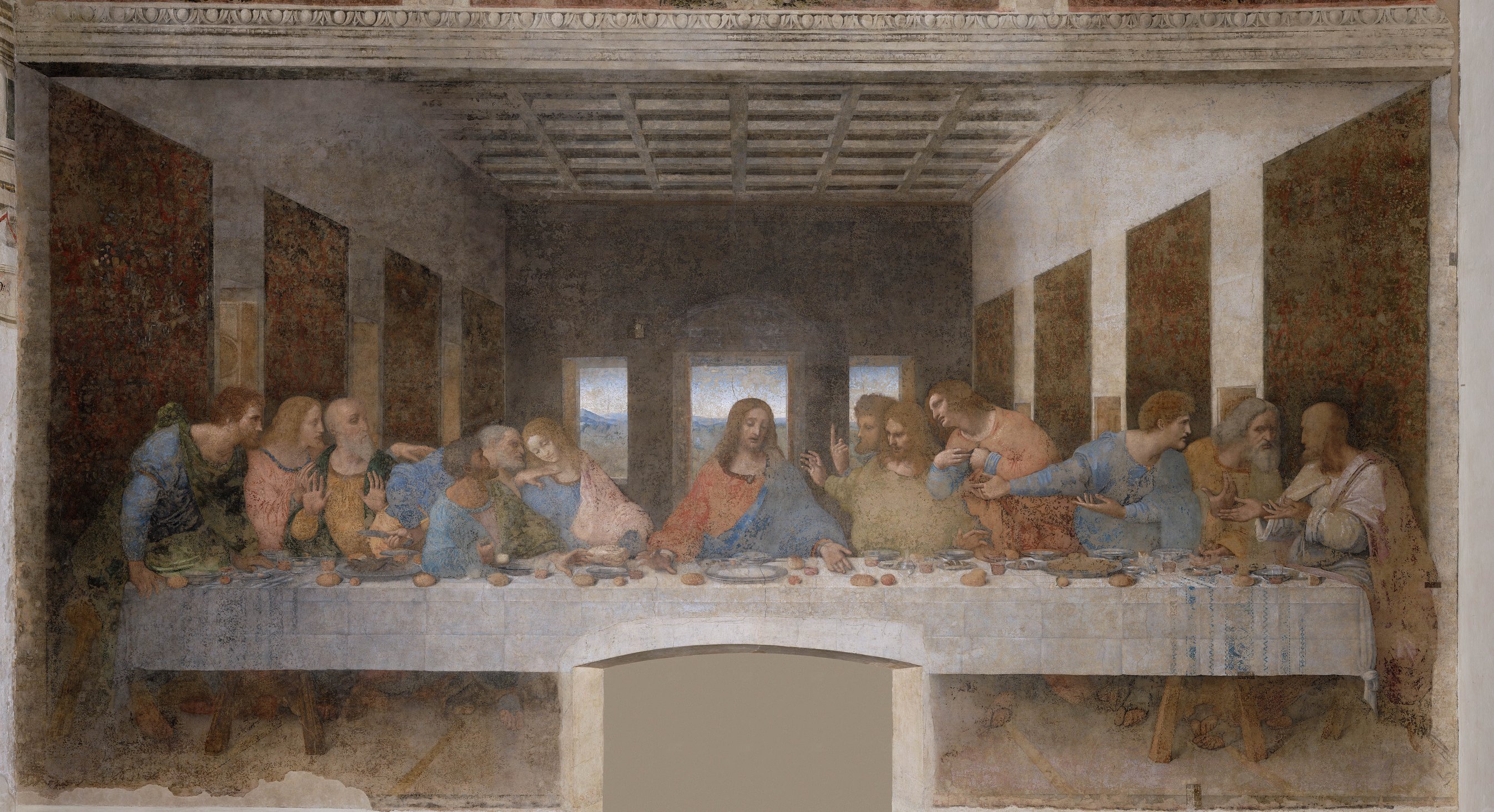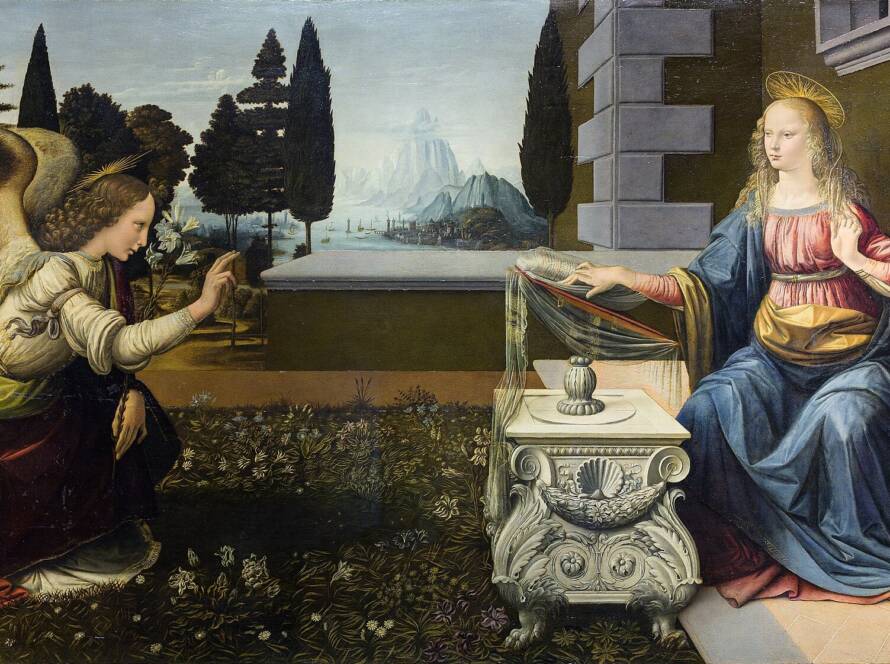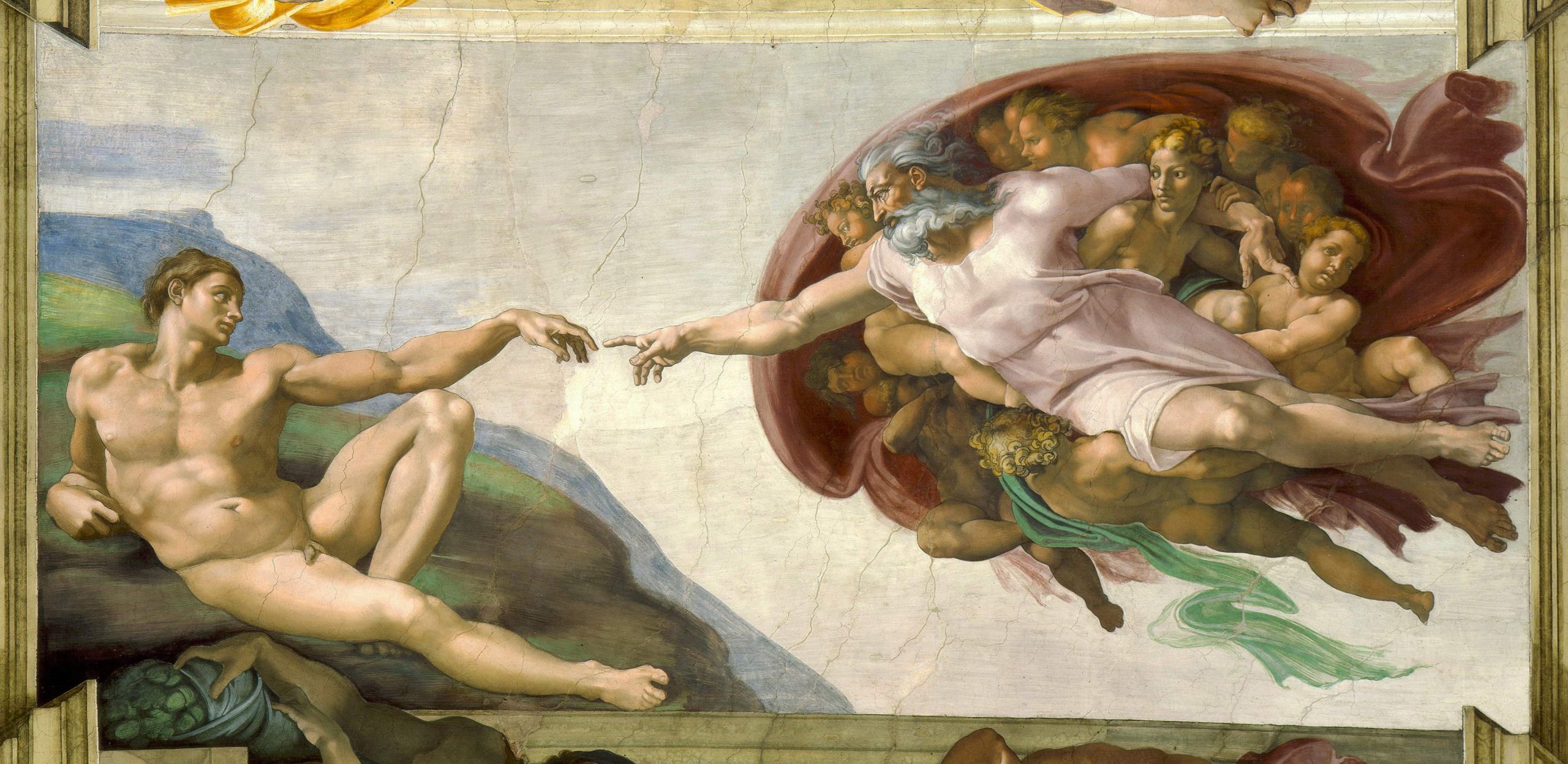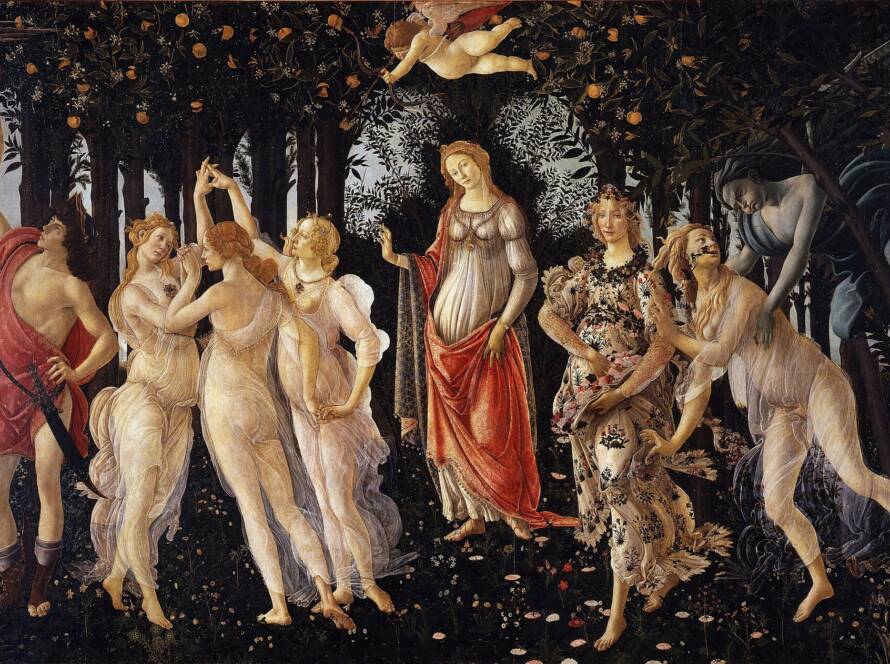The Last Supper depicts Jesus’s final supper with his apostles before his capture and crucifixion by Roman soldiers in Jerusalem. Jesus is positioned at the centre of a long dining table, flanked by his twelve apostles. The painting depicts the dramatic moment when Jesus reveals to his apostles that one of them will betray him. The impact of this shocking revelation leads the apostles to differing reactions. Despite this emotionally charged atmosphere, Jesus maintains a serene presence in the centre of the painting. Jesus, detached from the surroundings and the apostles’ reactions, clearly emphasizes his central character, while the apostles themselves are divided into groups of three by their reactions.
The trio at the top left -Bartholomew, James son of Alpheus, and Andrew – are stunned by the event and display questioning attitudes. Andrew, raising his hands in astonishment, James pointing to Jesus and speaking to him, and Bartholomew, excitedly rising from the table, all reinforce the sense of shock in the work.
At the other end of the table, Matthew and Jude Thaddeus turn to Simon, seated at the right-hand end of the table, pointing to Jesus, seeking answers to their questions and discussing the situation. The other trio, situated between them and Jesus, consists of Thomas, James son of Zebedee, and Philip. These three turn to Jesus in various ways, demanding an explanation. Thomas, with his finger raised, James with his arms outstretched, and Philip, with his hands clasped across his chest, addressing Jesus, attempt to understand how a betrayal could occur.
The three figures immediately to the left of Jesus in the painting consists of Peter, Judas, and John the Evangelist, and comprises the most crucial characters in the work. The most striking of the group is Judas, the apostle in the center, who betrayed Jesus. Terrified that his secret has been revealed, Judas retreats. In his right hand, Judas holds a purse, containing the silver coins received in exchange for revealing Jesus’s identity to the Romans. Judas’s left hand is seen reaching for the plate in front of him, which Jesus also reaches for. This gesture is a reference to Jesus’s answer to the disciples’ question: “Who will betray me?” (“The one who has dipped his hand into the bowl with me will betray me.”). Judas’s head, with its face shrouded in darkness, is also the lowest among the apostles, emphasizing his identity as the “traitor” to the audience. Peter, a white-haired and bearded man standing just behind Judas, holds a knife in his back hand. Peter is about to cut off the ear of one of the Roman soldiers when they capture Jesus. Therefore, the knife is a reference to this event in the painting. Located between Judas and Jesus is John the Evangelist, Jesus’ youngest apostle. Referred to in the Gospels as “Jesus’s favorite disciple,” John leans toward Peter, entranced by the devastating revelation. Depicted as a teenage boy, John is often depicted in artwork as having a rather feminine appearance with his long, blond-red hair.
In stark contrast to the Apostles, who are now mingling in panic over the revelation of the betrayal, Jesus maintains a peaceful posture at the center of the table. Pointing to the bread with his left hand, Jesus is explaining the bread-and-wine ritual known as the Eucharist. Having instructed his disciples to consume the wine as his blood and the bread as his body in remembrance of him after his death, Jesus simultaneously explains the betrayal too.
The painting references the Trinity (father, son, and holy spirit) in several ways. The windows in the background and the ceiling beams are arranged in groups of three, while the apostles are also grouped in groups of three, and Jesus, with his body, forms a triangle.
One of the striking aspects of Leonardo’s work is his unusual and effective use of perspective. Located on the interior wall of the Monastery of Santa Maria delle Grazie, this use of perspective creates the illusion of a separate room on the wall. Furthermore, this magnificent technique also reveals the painting’s natural beauty.
Although it is a mural, Leonardo’s work is not a fresco painted on wet plaster. Choosing to paint on a stone wall using a unique method he developed, Leonardo aimed to achieve more vibrant colours. But the result was unfortunately not successful. Even within the first 50 years of its completion, the work had lost a significant portion of its surface. It was also subjected to various forms of damage, including the bombing of the monastery during World War II. Today, the work, preserved through restoration efforts, has lost most of Leonardo’s original brushstrokes. Because of door opened in the center of the painting, Jesus’ feet are not visible today. The actual position of the feet visible earlier is thought to be crossed, thus indicating the crucifixion.
Location: Monastery of Santa Maria delle Grazie, Milan
Date: 1495-1498
Period: Rönesans
Sub-Group: High Renaissance






